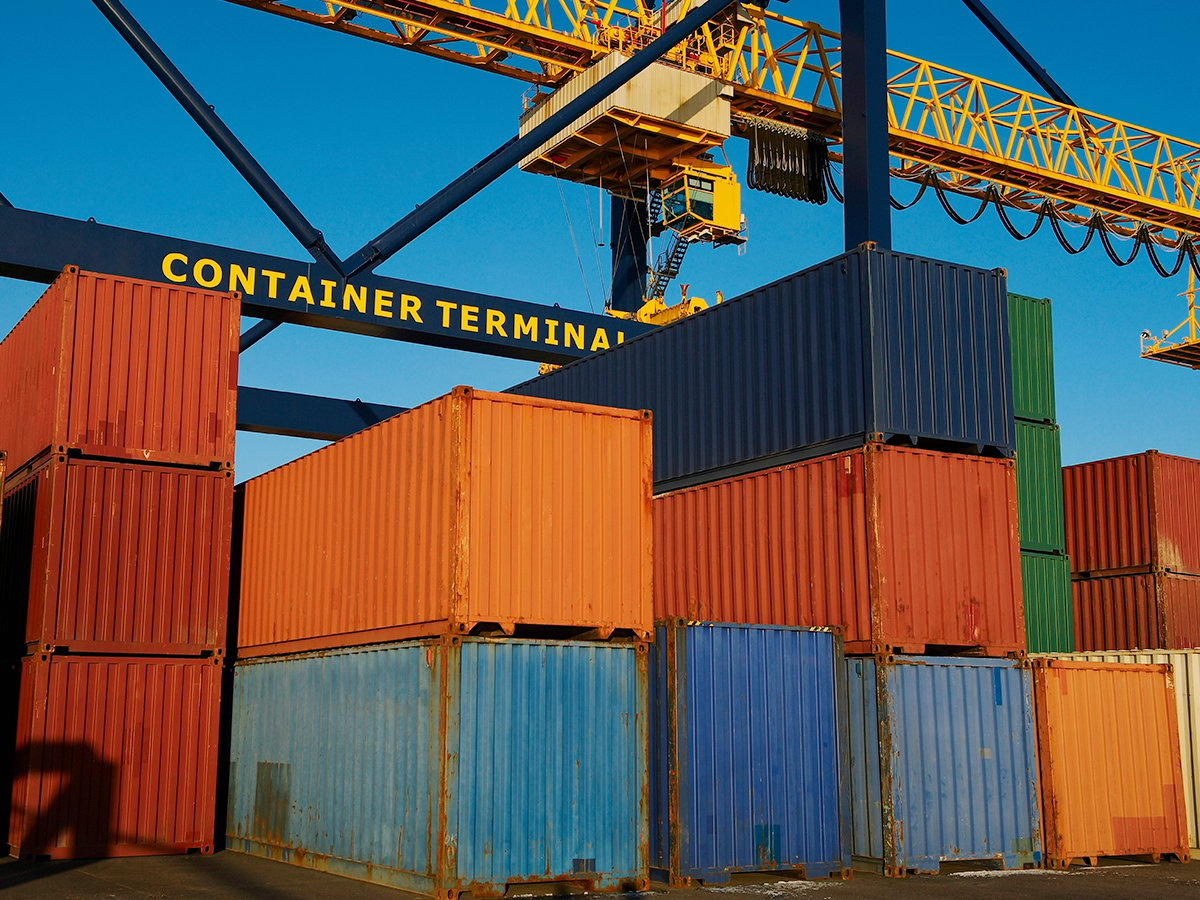If you're managing logistics near a border, the location of your cross dock site can either streamline your supply chain or create costly setbacks. It's not just about picking the closest option; it's about choosing a facility that can handle your freight volume, operate efficiently, and meet timing requirements without causing backups or delays.
What’s more, the financial stakes are rising. Rents for cross-dock warehouses are 60–70% higher than standard warehouse facilities because of higher land-to-building ratios and more expensive builds. That means every square foot must work harder, and every logistics decision must be smarter.
To get the most from your investment, focus on layout, location, and dock scheduling. The right cross dock facility helps you scale, reduce delays, and respond quickly to changes.
What to Check First When Choosing a Cross Dock Facility
The first step to choosing a cross dock facility near the border is understanding your specific freight needs. Cross-docking is a logistics method that involves unloading incoming goods and moving them directly onto outbound trucks without long-term storage. This reduces storage time, lowers inventory holding costs, and helps move goods quickly and efficiently across the supply chain.
When selecting a cross-docking facility, consider how it supports continuous cross-docking and whether it can handle shipments into smaller, more frequent batches from multiple suppliers. Volume, frequency, product type, and delivery windows all shape what kind of site will work best.
Next, evaluate the facility’s layout and design. A good border transfer site should support quick transfer from inbound and outbound shipments without unnecessary movement or downtime. Also, look at technology. Real-time tracking, barcode scanning, and integrated systems make coordination smoother and help improve dock scheduling accuracy.
That’s where Visigistics comes in—helping you identify the right cross dock facility by aligning your operational needs with the layout, tech, and flow required to reduce delays and increase throughput.
How Cross-Border Logistics Changes the Way You Choose Sites
When it comes to cross dock site selection near the border, cross-border logistics changes everything. It’s not just about finding a location with loading docks and parking spaces—it’s about ensuring the facility is built for the complexities of international shipments, customs processes, and binational coordination.
Choosing a site without cross-border readiness can introduce delays, compliance issues, and broken links in your logistics chain. But selecting one that’s designed for border-specific workflows can improve efficiency, reduce risk, and streamline the movement of goods across international lines.
Here’s how border-focused features change the way you evaluate your cross dock options:
|
Factor |
Without Cross-Border Logistics Focus |
With Cross-Border Logistics in Mind |
|
Facility Proximity |
May be far from customs processing |
Located close to border crossings |
|
Regulatory Knowledge |
Limited experience with compliance |
Staff trained on border logistics |
|
Documentation Handling |
Manual and error-prone |
Integrated with customs systems |
|
Freight Flow |
Slower, more fragmented |
Aligned with cross-border shipment timing |
|
Coordination |
Disconnected from import/export teams |
Integrated border logistics workflows |
That’s where Visigistics makes a real difference—helping clients evaluate and select border-side hubs designed specifically for cross-border logistics. By focusing on site efficiency, regulatory compliance, and turnaround speed, Visigistics ensures your facility supports smooth customs processing and consistent performance.
The Role of Inbound and Outbound Shipments in Operational Flow
Inbound and outbound shipments form the foundation of every successful cross-docking operation. If one side of the flow breaks down—whether due to poor timing, congestion, or miscommunication—the entire logistics process can suffer. Efficient coordination between incoming and outgoing goods not only improves operational flow but also reduces storage time, increases delivery speed, and lowers overall logistics costs.
A well-managed balance between inbound and outbound activity ensures your cross dock facility doesn’t turn into a holding zone. Inbound and outbound shipments need to be tightly timed and tracked so that goods can move directly from one dock to the next. This seamless transition of inbound and outbound shipments supports continuous flow, minimizes storage time, and helps logistics teams maintain a clear rhythm throughout daily operations, but functions instead as a fast-paced transfer point that supports continuous cross-docking.
Here's how to keep the flow efficient at your border transfer site:
1. Schedule Inbound Arrivals
Coordinate truck arrivals using staggered time slots to avoid crowding at the loading dock and to keep the flow of goods steady. This helps balance workload and supports more accurate dock scheduling, particularly during peak hours.
2. Unload Fast and Accurately
Make use of clear signage, well-trained staff, and barcode scanning to speed up the unloading process. Reducing unloading time directly increases the efficiency and throughput of the cross-docking operation.
3. Sort Quickly
Quickly route goods to outbound staging areas to eliminate unnecessary hold times. Pre-sorting based on destination or product type improves the movement of goods and supports faster delivery schedules.
4. Prep Outbound Loads
Ensure that outbound shipments are matched with the correct trucks in advance. Pre-labeled pallets and real-time load planning systems can reduce outbound delays and maximize trailer utilization.
5. Confirm and Close
Finalize the shipping process by double-checking load accuracy, sealing trailers, and completing necessary documentation. A smooth closing step ensures better traceability and minimizes errors before departure.
Managing the steady flow of inbound and outbound shipments is critical to reducing delays and maximizing dock usage. But without the right support and systems in place, even the best-designed cross dock facility can fall short. Visigistics steps in with proven strategies and tools that streamline shipment coordination, enhance timing, and integrate seamlessly with cross-border logistics operations, so your facility performs at its best every day.
Why Dock Scheduling Can Make or Break Your Freight Timing
Dock scheduling isn’t just about time slots—it’s the core of a well-run border transfer site and a key element in optimizing your logistics process. Efficient dock scheduling helps reduce costs and shorten storage time by minimizing wait periods and streamlining the transfer of goods. It also reduces the need for warehousing by ensuring incoming and outgoing shipments stay in motion, which is especially valuable for perishable goods and time-sensitive deliveries.. Poor scheduling creates bottlenecks, overtime, and missed deliveries. Here’s why it matters:
- Avoid Congestion: Staggered dock scheduling keeps trucks from arriving all at once and causing backups.
- Speed Up Transfers: With proper planning, inbound and outbound shipments move faster.
- Reduce Wait Times: Drivers aren’t stuck waiting for docks, which improves service.
- Balance Labor: You can allocate staff based on peak periods to boost efficiency.
- Align with Customs: Border delays affect delivery times—dock scheduling must sync with border logistics.
When dock scheduling isn't optimized, even a well-located facility can face bottlenecks, missed timelines, and poor coordination. That’s why building a schedule that matches inbound and outbound flow is critical to overall performance. Visigistics helps build dock scheduling systems that improve timing, reduce delays, and keep freight moving by aligning best practices with the flow of goods and minimizing inventory storage at your border transfer site.
Ready to Improve Your Cross Dock Strategy?
The best border transfer site near the border is one that fits your operation, not just your map. With the right planning, support for border logistics, clear flow of inbound and outbound shipments, and smart dock scheduling, your supply chain stays strong.
Visigistics helps businesses evaluate, select, and manage border-side hubs that match their needs and reduce costly delays, especially when cross-border logistics demands precision and speed.
Reach out to Visigistics today to build a cross dock strategy that keeps your shipments moving smoothly and your operations running on time.



.png)

